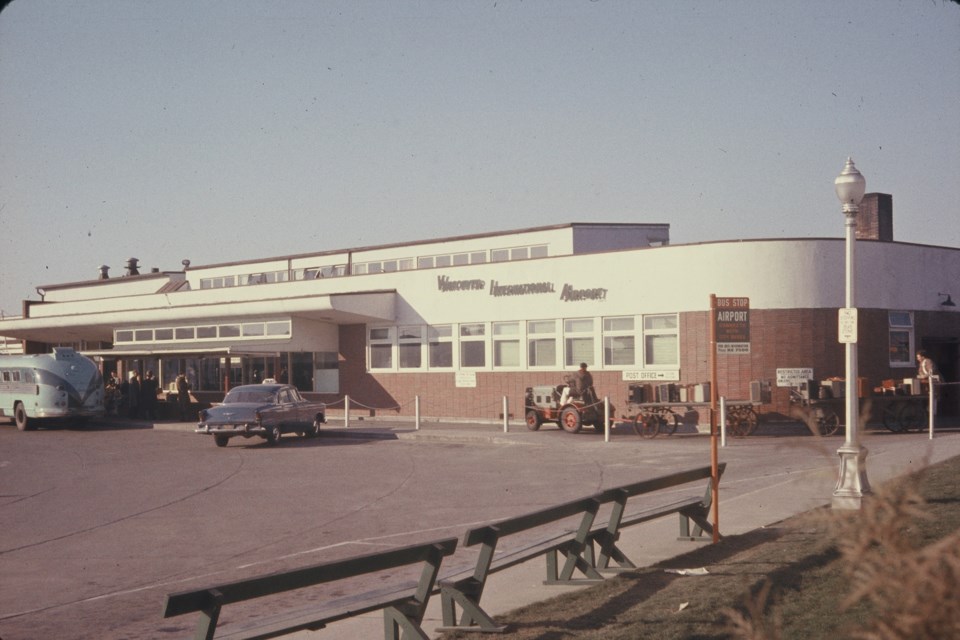Comparing our personal timeline with the events that marked history adds another dimension to our perception of time. For instance, the year my parents bought the house they inhabited to the end of their days – 1968 – was the year the first human photographed earth from lunar orbit. Another example – someone born on 14 March 2018 came into the world the day Stephen Hawking left it, and 14 March is also the day on which Einstein was born 139 years ago.
In this vein, I can say that the year we immigrated to Canada – 1956 – Vancouver International Airport celebrated its 25th birthday. Measured in airport years, it was practically a teenager.
At the beginning of the 20th century, airports as we know them were futuristic concepts. Take-off and landing places for flying machines were grassy fields – the first aircraft to fly in Western Canada took off on March 25, 1910 from a field next to Minoru Racetrack here in Richmond. The term airport entered our vocabulary about this time, although the word more commonly used then was aerodrome (on the model of hippodrome), formed from the Greek for air (“aeras”) and course (“dromos”). Even earlier, in 1891, aerodrome had signified aeroplane.
Our arrival in Vancouver in 1956 wasn’t by air, but by train, from Quebec City where our boat had docked. However, Vancouver International Airport soon became a familiar place, not only because we lived cheek by jowl with it, in Burkeville, but also because my father worked there, for BC Airlines.
I believe nostalgia played a role as well. It made us feel that the country we’d just left, thousands of miles across the Atlantic, was only hours, not days, away. In fact, we had one misconception about how direct the link between the airport and Europe actually was. For months we’d post our letters to family and friends back in Germany (the airmail stamp was 15 cents) at the airport post office, convinced that they’d be loaded onto the next plane – until we found out that all the mail first went to the central post office downtown, where it was sorted and then dispatched along the proper channels.
The airport branch of the Bank of Montreal was where I had my first banking experience, in 1957. It was traumatic. I believed that the money I deposited in my account would be stored for me in a little drawer, and that a withdrawal would return to me the same money that I had handed over. In all innocence, I gave the bank a precious silver dollar to keep in that little drawer. Imagine my dismay when, sometime later, I asked for it back and the teller passed me a paper dollar instead.
Vancouver International Airport’s terminal was six years old in 1956 (the site is now known as the South Terminal) and like the rest of the airport, it was on a human scale. Only two stories high, it had a public area at ground level and offices above. People boarding their flight walked to the plane parked a short distance from their departure gate, and friends could wave and call goodbye to them from the other side of a mesh fence.
Flying was not only a mode of transportation during this early era, it could also be a diversion, rather like a Sunday afternoon drive. On Oct. 20, 1963, TCA (now Air Canada) advertised in the Vancouver Sun: “A treat for the whole family. TCA Air Cruise Flights. Enjoy 30 minutes in the air in a TCA Viscount. $3 per person. Leave TCA Passenger Terminal International Airport Sunday, Oct. 27. First Flight: 2:30 p.m.”
Such a relaxed attitude to air travel was soon a fond memory. If 1968 was the year that marked the official opening of Vancouver’s new grandiose international terminal to the north of the old one (it would be greatly enlarged in the 1990s), it was also the year that marked the start of the so-called Golden Age of aircraft hijacking. Time was assuming a more complex, scarier shape.
Sabine Eiche is a writer and art historian (www.sabinedellarovere.com)



